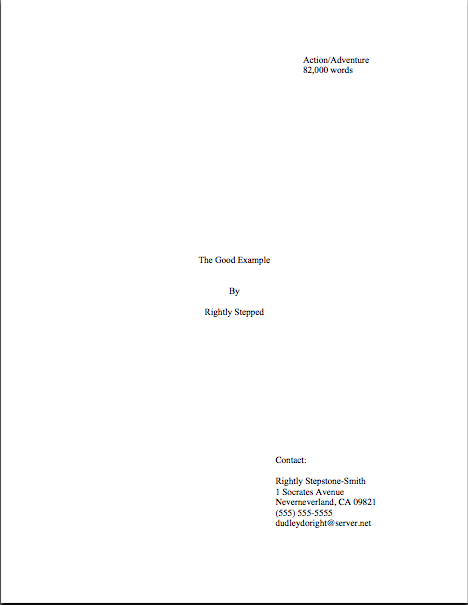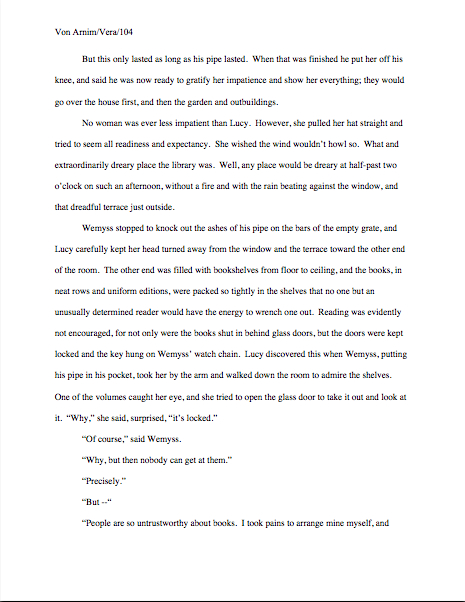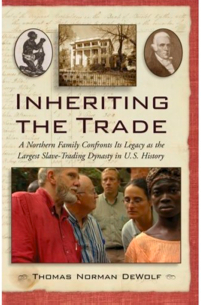Did everyone have a jolly, merry, or otherwise acceptable Thanksgiving? I ended up cooking two dinners for different sets of people (don’t ask), so I’m not sure that I ever actually managed to eat anything.
I was thinking of you, though, during the extended prep process. My SO and I both came from families that cooked a good deal, so naturally, we were each taught wildly different knife techniques. A couple chopping under entirely disparate philosophies seems completely normal to me, because while my father favored the French cordon bleu technique, my mother was equally adamant about a method she had picked up from an issue of Gourmet sometime in the mid-1950s. Depending upon which parent happened to be supervising, then, I was expected to produce one of two techniques perfectly.
They had different philosophies about how best to hand-wash wine glasses, too. My childhood was an exercise in adaptation to rules, as those of you following the standard format series may have figured out by now. However, my parents did teach me well, and after all, a big part of the point of learning to chop properly is to keep one’s fingers intact, right?
Come to think of it, that’s a big part of the point of learning to hand-wash stemware correctly, too. A soapy glass can be very slippery.
Evidently, preserving one’s offspring’s fingers from harm is not a universal motivation amongst knife-technique teachers of the parental variety. Or so I gather from the results of the method my SO appears to have been instructed was the ONLY way to chop.
Let’s put it this way: after two days of prep work, my fingers remain pristine. His, on the other hand (other two hands, actually) are missing half a fingernail, gashed deeply on another finger, and generally covered with Band-Aids.
I don’t mention this to gloat, or to praise my parents’ techniques over his — although admittedly, since the folks who taught him theirs were sitting at our table yesterday, it was most tempting to ask what on earth they had been thinking. No, I bring this up because knowing how to chop vegetables without cutting one’s fingers, even if one is in a terrible hurry, is not all that conceptually dissimilar to learning to format a manuscript correctly, even when one is writing or revising on a deadline.
Yes, it’s a nit-picky pain to learn how to do it right — but your precious parts are more likely to be in one piece at the end of it. With a submission, the piece in question is the writerly ego.
I just mention.
For the last week or so I’ve been talking about how to format a manuscript professionally, and I’m beginning to fear that in my eagerness and vim, I may have scared some of you a little. My vehemence is kindly-motivated, I assure you: contrary to popular opinion amongst aspiring writers, how a submission is presented can indeed make a very great difference in how it’s received.
Yes, yes, I hear you, those of you who have been running around to writers’ conferences this season: you can hardly throw a piece of bread at an agent or editor’s forum without hitting a pro saying, “It all depends upon the writing.” They do indeed tend to spout this aphorism for a reason — it is in fact true.
But that doesn’t mean that the quality of the writing is the ONLY criterion agents, editors, contest judges, or any of the rest of us who read manuscripts for a living use when deciding whether to read beyond the first page of a submission. Professional presentation weighs in, as do marketability, a story’s probability of appealing to its target audience (not exactly the same thing), what happens to be the surprise bestseller of the moment — and yes, that whole slew of intangibles that make up personal taste.
There is, in short, no such thing as a foolproof formula for producing the perfect manuscript for submission.
As I’ve been arguing throughout this series on formatting, however, agents, editors, contest judges, screeners, and other professional readers develop an almost visceral sense of when a manuscript is properly formatted. So rather than screening submissions with a list of don’t by their sides, they more or less automatically discount pages that are cosmetically incorrect.
This is most emphatically not the same thing, though, as rejecting such pages on the spot because, say, an aspiring writer underlined a foreign-language word on page 1 instead of italicizing it.
Much as a reader with impeccable grammar will not necessarily throw down a book that misuses semicolons, most professional readers will not instantly reject an improperly-formatted submission without SOME further provocation. But believe me, the writer in both cases is going to have to work a whole lot harder to impress the reader as literate.
Unfortunately, the prevailing standards for printed books – which, as we have seen, differ in many significant respects from standard format for manuscripts – often lead innocent writers astray. Case in point: including a table of contents in a manuscript.
That seems as if it would be helpful, doesn’t it? In fiction, including it would enable an agent to go back and re-read the submission easily; in nonfiction, it would permit an editor to skip ahead to a chapter of particular interest.
And heck, if the manuscript fell upon the floor, a well-organized table of contents might make it a trifle easier to reassemble, right?
Wrong. In a published book, a table of contents, like an index, is a courtesy to bookstore browsers trying to get a feel for the contents and buyers who do not necessarily want to read the entire book. Why, runs the industry’s logic, would an agent or editor be interested in acquiring a book if he doesn’t like it well enough to read it all?
So really, a table of contents in a manuscript is just a wasted page. Do not include it in a submission, any more than you would include an index or those boxes around text that magazines are so fond of printing. To professional eyes, it looks unprofessional, especially in fiction.
It’s also an inconvenience – and it’s never a good idea to fritter away the energies of people you want to do you great big favors like representing your book, is it?
Why inconvenient? Well, think about our time-strapped friend Millicent the agency screener for a moment: when she turns over the title page, she expects to find the first page of text there waiting for her, all ready to be judged in a flash. Instead, she finds a table of contents, something she would only find helpful if she were to read the entire manuscript. Given that she tends to reject submissions somewhere between paragraph 1 and page 5, the information that Chapter 8 begins on page 112 will most likely strike her as at best gratuitous – and at worst presumptuous.
“What gives?” she’ll say, taking an extra sip of her too-hot latte as she impatiently gets the table of contents out of her way. “Doesn’t this writer know the difference between a manuscript and a book?”
‘Nuff said, I think.
Or maybe not — do I hear some aspiring nonfiction writers out there? “But Anne,” these excellent souls point out, “a book proposal is supposed to include a table of contents for the planned book!”
Ah, I’m glad that you brought this up, because this is a very common misconception amongst first-time proposers, who tend to cram precisely the table of contents they expect to see in their eventually-published books into their proposals. They look a little something like this:
Anyone out there see problems with this as a marketing document?
Actually, I’m sure that some of your hands shot into the air even before I showed this example, in your eagerness to take issue with the notion that a submission should resemble a published book in the first place. Well caught, eager wavers. Spot any other problems?
If you said that the example above doesn’t include information that could possibly be either accurate or useful, give yourself a gold star for the day. Obviously, it would be impossible for a proposer to state with certainty where the chapter breaks would fall in the proposed book when published; all the information s/he could reasonably offer in this sort of table of contents, then, would be educated guesses about how long each chapter might be. Or perhaps a list of where those breaks fall in the draft manuscript.
But that’s not the information nonfiction agents and editors want to see in the book proposal. The information they do want to see in the annotated table of contents is a brief description of the CONTENTS of each chapter.
The word annotated should have been a clue, I guess.
And like so many other differences between professional formatting and, well, everything else they see in submissions, it’s really, really obvious at first glance to someone who has seen a book proposal before whether the submitter du jour has followed the rules. Compare what the first page of a correctly put-together annotated table of contents looks like with the truncated version above:
See the difference? I assure you, Millicent will. From ten paces away.
I don’t feel I may leave this topic without addressing the other EXTREMELY common opening-of-text decoration: epigraphs, those nifty little quotes from other sources that we writers so adore.
Nobody else likes them much, but we writers think they’re great, don’t we? There is something powerfully ritualistic about typing the words of a favorite author at the beginning of our manuscripts; it’s a way that we can not only show that we are literate, but that by writing a book, we are joining some pretty exalted company.
Feeling that way about the little dears, I truly hate to mention this, but here goes: it’s a waste of ink to include them in a submission. 99.9998% of the time, they will not be read at all.
Stop glaring at me that way; it’s not my fault.
It’s true, alas: I’ve literally never met a professional reader who doesn’t just skip ‘em in a first read — or (brace yourselves, italics-lovers) any other italicized paragraph or two at the very beginning of a manuscript. They just assume, often not entirely without justification, that if it’s in italics, it doesn’t really have much to do with the story at hand, which (they conclude, not always wrongly) begins with the first line of plain text.
There’s another reason that they tend to skip ‘em: the sad fact is, at the submission stage of the game, no one cares who a writer’s favorite authors are.
The official justification for this — yes, there is one — is quite interesting: even the busiest person at an agency or publishing house picks up a manuscript in order to read ITS author’s writing, not someone else’s.
Kinda hard to fault them for feeling that way, isn’t it, since we all want them to notice the individual brilliance of our respective work?
Sentiment aside, let’s look at what including an epigraph achieves on a practical level. Instead of startling Millicent with your erudition in picking such a great quote, the epigraph will to prompt her to start skimming BEFORE she gets to the first line of your text – AND you will have made her wonder agaub if you realized that manuscript format and book format are not the same.
Good idea? Or the worst marketing idea since New Coke?
If that all that hasn’t convinced you, try this on for size: while individual readers are free to transcribe extracts to their hearts’ contents, the issue of reproducing words published elsewhere is significantly more problematic for a publishing house. While imitation may be the sincerest form of flattery, reproduction of published text without the author’s permission is known in the biz by another, less flattering name: copyright infringement.
If the quote is from a book that is not in the public domain, the publisher will need to obtain explicit permission to use any quote longer than fifty words. Ditto for ANY quote from a song that isn’t in the public domain, even if it is just a line or two.
So effectively, most epigraphs in manuscripts are signposts shouting to an editor: “Here is extra work for you, buddy, if you buy this book! You’re welcome!”
I’m sensing some disgruntlement out there, amn’t I? “But Anne,” I hear some epigraph-huggers cry,
“the material I’m quoting at the opening of the book is absolutely vital to include! The book simply isn’t comprehensible without it!”
Okay, if you insist, I’ll run through the right and wrong ways to slip an epigraph into a manuscript — but bear in mind that I can’t promise that even the snazziest presentation will cajole Millicent into doing anything but skipping that quote you love so much. Agreed?
Regardless of while title page format you choose, do not, under any circumstances, include a quote on the title page as an epigraph — which is what submitters are most likely to do, alas. Let’s take a gander at what their title pages tend to look like:
How likely is Millicent to notice the quote at all? Well, this was what she was expecting to see:
Actually, that wasn’t precisely what she expected — did you catch the vital piece of information he left off his title page?
If you said that Eeyore neglected to include the book category on the second example, give yourself a pile of thistles. (Hey, that’s what he would have given you.) My point is, the quote in the first example is going to stand out to Millicent like the nail in a certain critter’s tail.
Other submitters choose to eschew the title page route in order to place an epigraph on the first page of text. The result is immensely cluttered, by anyone’s standards — especially if the submitter has made the very common mistake I mentioned in my discussion of title pages last time, omitting the title page altogether and cramming all of its information onto page 1:
Where did all of our lovely white space from yesterday and the day before go? Into quoting, partially.
The last popular but ill-advised way to include an introductory epigraph is to place it on a page all by itself, as it might appear in a published book:
What’s wrong with this, other than the fact that Poe died before our author wrote Sons and Lovers? Chant it with me now, everyone: A MANUSCRIPT IS NOT SUPPOSED TO RESEMBLE A PUBLISHED BOOK.
At best, Millicent is likely to huffily turn past this page unread. At worst, she’s going to think, “Oh, no, not another writer who doesn’t know how to format a manuscript properly. I’ll bet that when I turn to page one, it’s going to be rife with terrible errors.”
Does either outcome sound desirable to you? I thought not.
So what SHOULD an epigraph-insistent submitter do? Leave it out, of course — weren’t you listening before?
But if it must be there, our pal Mssr. Poe actually wasn’t all that far off: all he really did wrong here was include a slug line. The best way to include an introductory epigraph is on an unnumbered page PRIOR to page 1. On that unnumbered page, it should begin 12 lines down and be centered.
But I’m not going to show you an example of that. Why? Because I really, truly don’t think you should be including an epigraph at all at the submission stage.
Just in case I hadn’t made that clear.
That doesn’t mean you should abandon the idea of epigraphs altogether, however. Squirrel all of those marvelous quotes away until after you’ve sold the book to a publisher — then wow your editor with your erudition and taste.
Or, if you can’t wait that long, land an agent first and wow her with your erudition and taste. But don’t be surprised if she strongly advises you to keep those quotation marks to yourself for the time being.
If you are submitting directly to a publisher, do be aware that most publishing houses now place the responsibility for obtaining the necessary rights squarely upon the author. If you include epigraphs, many editors at these houses will simply assume that you have ALREADY obtained permission to use them. Ditto with self-publishing presses.
This expectation covers, incidentally, quotes from song lyrics, regardless of length.
I’m quite serious about this. If you want to use a lyric from a song that is not yet in the public domain, it is generally the author’s responsibility to get permission to use it — and while for other writing, a quote of less than 50 consecutive words is considered fair use, ANY excerpt from an owned song usually requires specific permission, at least in North America. Contact the American Society of Composers, Authors, and Publishers (ASCAP) for assistance in making such requests. (For a very funny first-hand view of just what a nightmare this process can be, please see FAAB Joel Derfner’s guest post on the subject.)
Have I talked you out of including an epigraph yet? I hope so.
Remember, just because you do not include your cherished quotes in your submission does not mean that they cannot be in the book as it is ultimately published. Contrary to what 99% of aspiring writers believe, a manuscript is a DRAFT, not a finished work. In actuality, nothing in a manuscript is unchangeable until the book is actually printed — and folks in the industry make editing requests accordingly.
In other words, you can always negotiate with your editor after the book is sold about including epigraphs. After you have worked out the permissions issue, of course.
Keep up the good work!




































